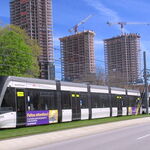crs1026
Superstar
That is the crux of a govt run operation. It's at the whim of the political winds.
That's why private railways are always much more stable regardless of the downsides
As much as I don’t like the progress and direction (or lack thereof), this project is actually fairly CPC-proof.
The P3 format takes things out of a space where the project can be criticized as growth in government, or as a non-profit generating boondoggle. It also massages the cash flow to a more bottom line sensitive optic. (Cosmetically, perhaps….but if it works….). So I don’t believe they will oppose it on principle or simply from a subsidy/cost perspective, although they may apply a bit of pragmatism in scope.
The biggest risk is that the Cons will bristle at the amount of consultation required or the quiet “gives“ that will no doubt be part of that process. While the Liberals rejoice in being seen as “inclusive” and consultative and conciliatory (again, more cosmetics than reality sometimes) the Cons will want to show that they are in charge and not diverted by opposition ( mumble Ford mumble…). So the “consultation” process could be botched, or simply degenerate into a legal battle with a virtual stalemate (similar to the pipeline morass). The biggest impact may be pace.
At the end of the day, the Cons will be left with various proposals and demand from air and highway transport, and once those price tags are apparent, HxR may not look so bad.
- Paul




